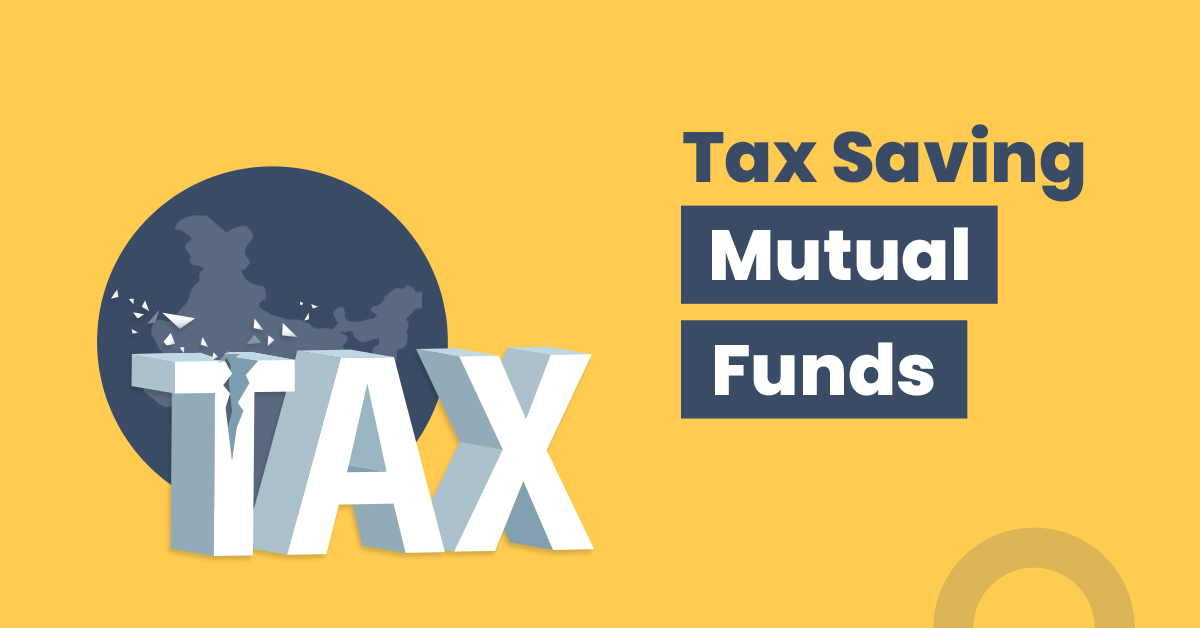Invest in Tax Saving Mutual Funds in India


Equity Linked Savings Scheme, commonly referred to as ELSS, is an open-ended equity mutual fund which invest 80% of their assets in equities or equity-related instruments. These equity funds feature a diversified asset allocation, which helps to mitigate risks. However, the defining feature of this mutual fund is that it offers certain tax deductions, so they are called as tax saving mutual funds.
Want to know more about these equity funds?
The following sections will tell you all you need to know before investing in ELSS.
List of Top 10 Tax Saving Mutual Funds in India
The table below enumerates the best tax saving mutual fund schemes according to their 5-year annualised returns:
| Name of Tax Saving Mutual Funds | 5 Year Annualised Returns |
| SBI Tax Advantage Fund-Series III-Direct Plan-Growth | 23.64% |
| Quant Tax Plan-Direct Plan-Growth | 22.37% |
| SBI Long Term Advantage Fund-Series IV-Direct Plan-Growth | 22.27% |
| Canara Robeco Equity Tax Saver Fund-Direct Plan-Growth | 16.39% |
| Mirae Asset Tax Saver Fund-Direct Plan-Growth | 16.22% |
| Bank of India Tax Advantage Fund-Direct Plan-Growth | 15.88% |
| SBI Long Term Advantage Fund-Series III-Direct Plan-Growth | 14.98% |
| IDFC Tax Advantage (ELSS) Fund-Direct Plan-Growth | 14.38% |
| SBI Long Term Advantage Fund- Series II- Direct Plan- Growth | 14.28% |
| SBI Long Term Advantage Fund- Series I- Direct Plan- Growth | 13.60% |
How do Tax Saving Mutual Funds Work?
Like any other mutual fund, ELSS pools money from various investors, and then the fund manager invests the corpus in the equity market as per the objectives of the scheme. He or she ensures that the investment is done in a balanced way in stocks across market capitalisation (Large Caps, Mid Caps, Small Caps) and industry sectors. This is done to ensure that even if a particular investment faces losses, the other investments manage to balance it.
As ELSS have a statutory lock-in period of 3 years. If you have invested in ELSS Mutual Fund via lump sum, you can redeem your units on the day that the 3 year lock-in period is completed. However, in the SIP route each of your SIP instalments will have a separate 3-year lock-in period, as each instalment is treated as a new investment. This 3 year period is calculated from the day units are allotted for that month’s instalment.
To get optimal returns, it is a prudent idea to stay invested in ELSS funds for a longer period than 3 years. An additional advantage is that by investing in these funds you can claim tax deductions of up to Rs. 1,50,000 in a financial year under section 80C.
Also Read: Tax Harvesting: How to Save LTCG Tax on Mutual Funds?
Features of Tax Saving Funds
Detailed below are its features:
- ELSS funds invest at least 80% of their corpus in stocks and stock-related instruments.
- Investors can claim a tax-deduction of up to INR 1.5 lakh on their ELSS investments, as a provision under section 80C of the Income Tax Act, 1961.
- Compared to other tax-savings schemes such as PPF and NSC, it has been observed that ELSS returns are higher, particularly when the markets are on the bullish trend.
- ELSS mutual funds have a mandatory lock-in period of three years, with no provision of premature withdrawal.
- The minimum investment amount is Rs. 500 for most fund houses. However, there is no specification for the maximum amount one can invest.
Benefits of Tax Saving Mutual Funds
Enumerated below are the benefits of ELSS funds:
- Among all the tax-saving investment options available under Section 80C of the Income Tax Act, Equity Linked Savings Schemes have the shortest lock-in period of only 3 years.
- As fund managers invest in equity and equity-linked instruments, past performances of ELSS funds have shown that they have the potential to offer superior returns.
- Investors can choose to invest through SIP (weekly/monthly/quarterly/semi-annually or annually) or lump-sum as per their convenience.
- ELSS scheme is an open-ended equity fund, allowing investors to invest any time during the given year.
- Investing in tax-saving mutual funds provide investors with the opportunity of wealth creation in the long run.
Also Read: Best ELSS Funds to Invest in 2022 in India
Who Should Invest in Tax Saving Mutual Funds?
ELSS Funds are an ideal investment option for the following investor profiles:
- Young investors who have just begun their career should invest in these funds as they can remain invested for a long period and reap maximum benefits of tax saving mutual funds.
- People with a high-risk appetite should opt for this investment. This is because tax saving mutual funds invest in equities which are subject to risks from market volatility.
- Investors must be comfortable with locking in their funds for 3 years. They need to have a long-term investment horizon to get the optimum benefits and earn high returns. In order to make long-term profits, one must be able to invest for around five to seven years.
- People need to minutely assess the track record of the mutual fund. Furthermore, they need to choose a mutual fund scheme that is well aligned with their financial goal and risk appetite.
Also Read: Tax Saving Options For You Under Section 80C
Tax Benefits and Rules
Detailed below are the tax benefits of ELSS funds:
- As per Section 80C of the IT Act, ELSS funds offer tax deductions up to Rs. 1.5 lakh. So if you fall in the 30% tax bracket, you can save a maximum of Rs. 46,800 in tax payments in one financial year.
- Being an equity-linked instrument with a lock-in period of 3 years, the gains from redeeming ELSS units are taxable as Long Term Capital Gains.
- As per the IT Act, LTCG exceeding Rs. 1 lakh on ELSS are taxable at 10% without indexation benefit
- Dividends that investors receive will be added to your income and taxed as per applicable slab rates.
Things to Consider When Investing in Tax Saving Mutual Funds
Are you wondering how to select a mutual fund? Listed below are some factors to consider before investing in an ELSS:
- History of Performance
Investors need to analyse the past performance of the tax saving mutual fund scheme as it enables them to make better investment decisions. But, one must remember that past performances do not always indicate a fund’s future performance.
- Fund Manager
Investors need to check the competency and experience of the fund manager as he/she would be responsible for managing the fund. He or she must be experienced and competent enough to select the appropriate stocks and build a strong portfolio.
- Financial goals
An investor should always assess their future goals before choosing an appropriate investment. Such goals can include saving money for retirement, children’s education, wedding, home renovation, medical treatment, etc. As ELSS funds come with a lock-in period, it is a good idea to invest for long-term goals.
- Expense Ratio
The yearly fees required for managing/operating a tax saving mutual fund scheme are known as the expense ratio. People must consider expense ratio as it greatly affects the generated returns.
The returns generated would be higher if a mutual fund scheme has a lower expense ratio. If potential investors come across two mutual fund schemes with almost the same asset allocation and performance, they should choose the one with a lower expense ratio.
- Ratios
Investors can also take into account various financial parameters like Sharpe Ratio, Standard Deviation, Alpha and Beta for analysing a mutual fund’s performance. Investors must note that a fund with a higher standard deviation and beta poses more risk than one with a lower standard deviation and beta. People need to consider a mutual fund scheme with a high Sharpe Ratio.
- Growth vs Dividend Plan
There are two types of options for reinvestments—dividend funds and growth funds. Investors need to choose an appropriate plan based on their financial goals. Given below are their details.
- Dividend option
One can divide this option further into two sub-categories—Dividend Payout and Dividend Reinvestment. The investor will receive regular dividends when it comes to the option of Dividend Payout. In Dividend Reinvestment, the investor’s dividends will get reinvested as a new instrument.
- Growth option
This is a long-term wealth creation option. The entire amount gets reinvested, leading to the compounding of profits over a long time.
Investors can redeem the entire value of ELSS funds after the completion of the 3-year lock-in period.
Also Read: Sharpe Ratio : Basics, How to use it and More
Final Word
This blog has enumerated the crucial details related to tax saving mutual funds in India. You can read the above sections to understand its features and benefits and if they are a worthwhile investment for your financial needs. It is a good idea to invest in ELSS when you are looking for both tax savings and maximum returns potential.
Frequently Asked Questions
1. Which one is better while investing in ELSS—SIP or Lump Sum?
Ans: One needs to opt for payment in a lump sum if he or she aims to save taxes at the end of the financial year. Investments via SIP are suitable for first-time investors as it inculcates financial discipline and spreads the payment over a longer period. However, the right investment mode depends on an investor’s financial goals and liabilities.
2. Are tax saving mutual funds better than other tax saving options like PPF?
Ans: PPF and similar investment options come with a fixed interest rate. Currently, the average category returns for ELSS for three different periods—1 year, 3 years and 5 years—are 18.96%, 18.76% and 14.38%, respectively.
ELSS funds have a lock-in period of only 3 years, while the PPF maturity period is 15 years. However, while ELSS has associated risks, PPF has no risk.
3. Can I make partial withdrawals from ELSS?
Ans: No. Investors need to remain invested in the fund for a minimum of 3 years. When it comes to equities or equity-related investment instruments, a long investment period translates to the creation of more wealth. So, it is advisable to stay invested for a long while.







